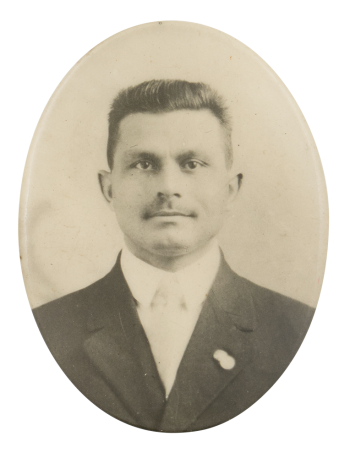| Category | |
|---|---|
| Additional Images | |
| Sub Categories | |
| Image Description | Black and white photograph of a man with a mustache and short hair in a suit |
| Back Style | |
| The Shape | |
| The Size | |
| Additional Information | Photographic pinback buttons made with celluloid material were extremely popular from the late 1800s to the 1930s. It was during the 1860s that photography became more available on the commercial market. Humphrey E. Copley of Connecticut sought a patent in 1861 to incorporate photographs onto buttons by utilizing a metal rim to hold the photograph in place. This technology coincided with the Civil War and mourners embraced the option of being able to wear visual representations of their loved ones. John Wesley Hyatt was an American inventor who received a patent for a product named celluloid in 1870. After refinement of the initial product, Hyatt’s celluloid became the first commercially profitable synthetic material. United States patent records reflect the usage of celluloid in making buttons with photographs in the late 1880s. In 1893 Benjamin S. Whitehead acquired a patent for using celluloid over the photo to protect the image. The increased availability of photography coupled with the ability of manufacturers to produce buttons inexpensively allowed the public to create a fashion fad out of the desire to have portable keepsakes. Have info on this button? Become a Button Museum fan and let us know. |
| Sources |
McInturff, Jennifer Ann, "Celluloid buttons : cataloging unusual photographic objects" (2009). Theses and dissertations. Paper 627. |
| Catalog ID | AR0192 |


